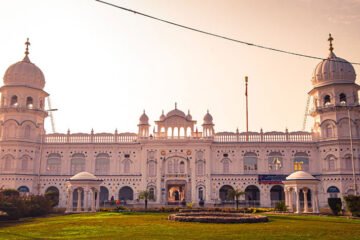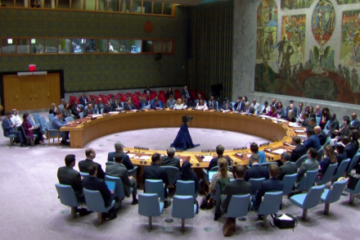Beneath the Uniform- The Plight of Soldiers in Indian Army

Indian paramilitary soldiers stand guard on the road leading towards Independence Day parade venue during lockdown in Srinagar, Indian controlled Kashmir, Thursday, Aug. 15, 2019. (AP Photo/ Dar Yasin)
The Indian armed forces have a rich history going back more than a century, at least in the case of army.
However, within the organisation, there is little opportunity, incentive or encouragement to question or oppose things. From outside, the holy cow status of the armed forces makes it difficult to question what is happening inside. This situation is a ready recipe for disaster. Moreover, this institution is so critical to India that even a minor improvement in it will pay back manifold to the society and country. After 70 years of Indianisation, it is time to examine some aspects with candor.
Of India’s ballooning population, currently 1.237 billion, 12 percent are practitioners of Islam, meaning that India is home to 10 percent of the world’s Muslims, who form the largest minority in India. Muslims are looked upon with scorn and suspicion by certain other segments of the country. Discrimination in employment, social events, and public places is still quite widespread and commonplace.
Another area where Muslims are underrepresented is the Indian Army. Just as Muslims are under-represented in the army, so are the Bengalis, Biharis, Oriyas, South Indians or Gujaratis. And just as Sikhs are over-represented, so are the Jats, Dogras, Garhwalis, Kumaonis, Gurkhas, Marathas and others.
While the image of the armed forces remains high, that of its senior officers has hit rock bottom in the eyes of the public as well as its own veterans.
The point for debate is the promotion system of the armed forces. Presently, all inputs for promotion are provided only by the superiors of the officer. This is indeed strange for a force that lays so much emphasis on leadership, i.e., the art of leading well. That being so, who knows the worth of the leader better than those led? They alone know the real leadership quotient of their officers. However, those who are led i.e. the troops under command, have absolutely no say in the promotion of their leaders. The senior officers know only that part of the officer what is shown to them. A correct understanding of leadership calls for taking a promotion input from subordinates, as well as peers and superiors.
Also, a major hindrance of soldiers is their retirement age and their lack of scope for promotion within their fraternity. The soldier’s retirement age is very early compared to bureaucrats. While bureaucrats can stick around till 60, most of the Army officers retire early because age catches up with their fitness which is crucial for their operation. Army officers do not reap the benefits of full pension since they cannot serve the full period of 60 years due to the nature of the job (since pension is based on your last income before retirement).
Furthermore, Hindu caste and social prejudice override the recruitment process for the Army which as a result remains a parochial force.
Moreover, in the last decade, as the Indian military has moved towards granting permanent commission to women officers, sexual harassment at workplace has been a subject off the table, perhaps because the military believes in dealing with its own in its own manner instead of allowing it to hang in public. Yet, there have been whispers and rumours that sexual harassment is rampant in the military with several male officers either not taking the women officers seriously or viewing them as trophies susceptible to exploitation.
Last year, Karunajeet Kaur, a female Sikh officer of the Indian paramilitary force has come forward with alarming revelations of sexual offences and predatory behaviour prevailing in the Indian military. Speaking to a news channel, the female officer revealed that women are only recruited in the Indian Army to offer “sexual pleasures” to the male officers and soldiers.
Karunajeet Kaur, the Deputy Commandant of the Indo-Tibet Border Police (ITBP) made these claims during a televised interview. After becoming a victim of sexual harassment herself, Karunajeet came forward with her story and resigned from her position.
This incident sheds light on the mismanagement and lack of values in the Indian armed forces. Despite its numerical superiority and extravagant arsenal, the Indian Army has failed to develop a dynamic military ethos, as exhibited by the Pakistan Army.
Over the years, the Indian Army and paramilitary forces have witnessed an alarming increase in suicide rates. In 2018 alone, Indian media reports revealed that more than 100 paramilitary personnel had committed suicide.
Army-men Suicides
Indian 34,067
Pakistan .. Zero.. only Army in the world with Zero Suicide rate https://t.co/x6iTkq2LrM— Sadat Younis (@sadat_younis) February 19, 2019
Reports suggest that the poor living conditions, working conditions and lack of sufficient food supplies are the primary reasons behind the heightened suicide rates across the Indian Army.










